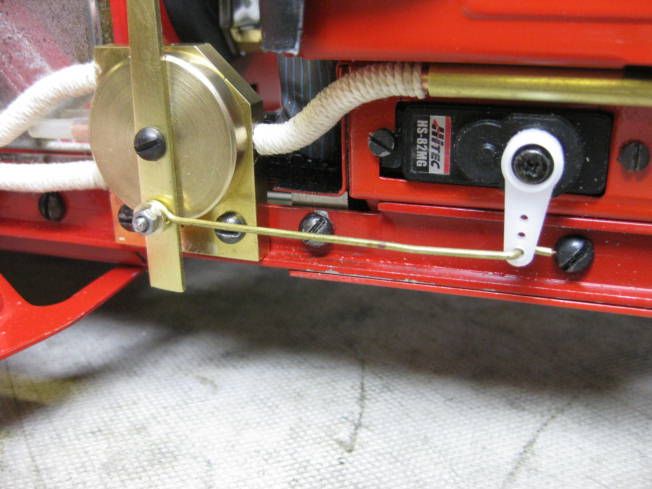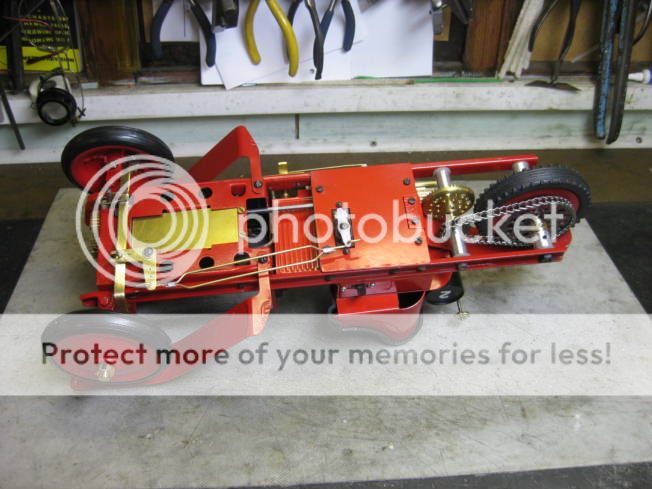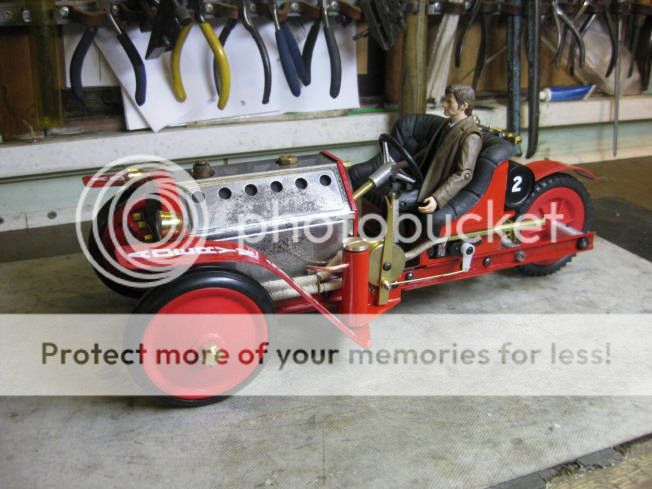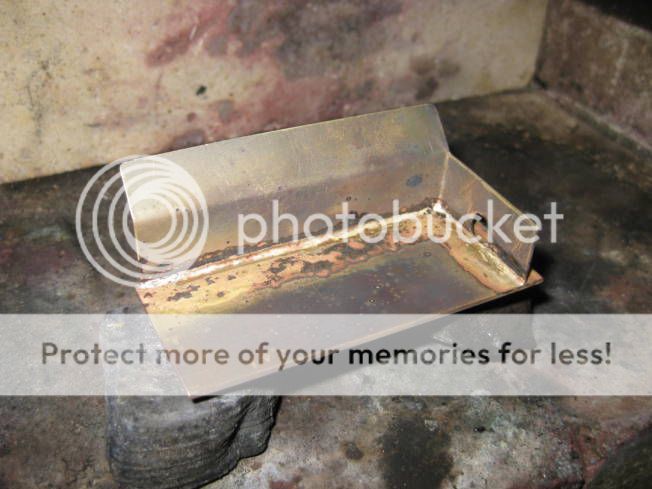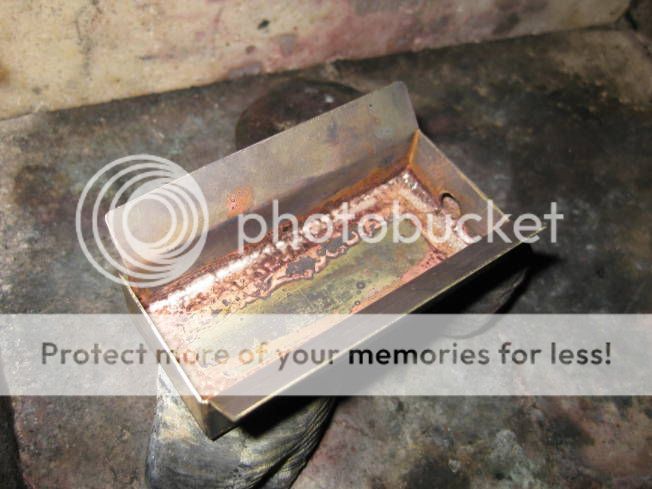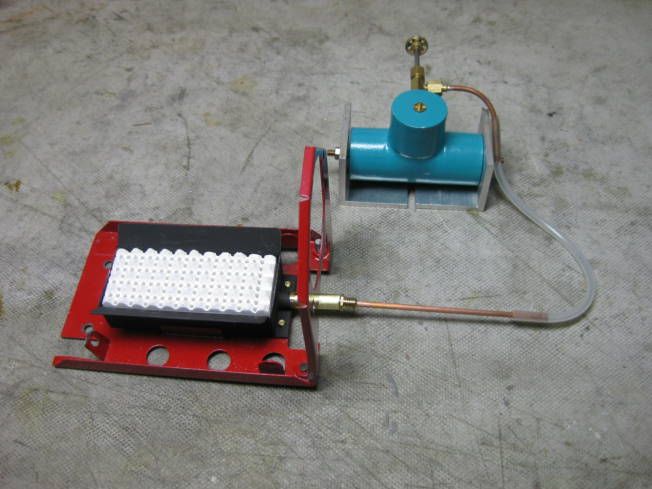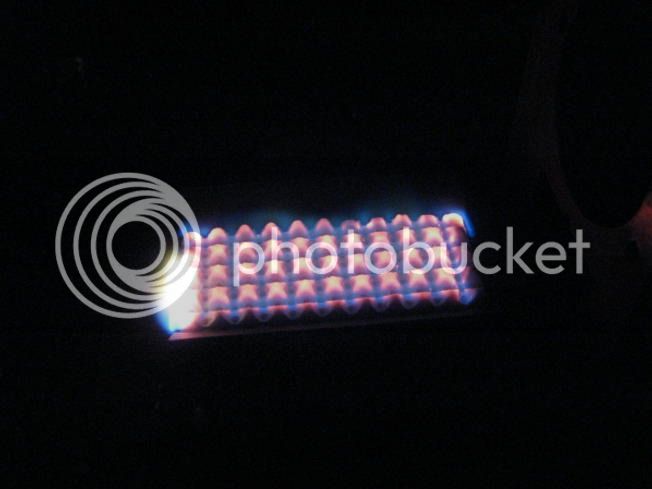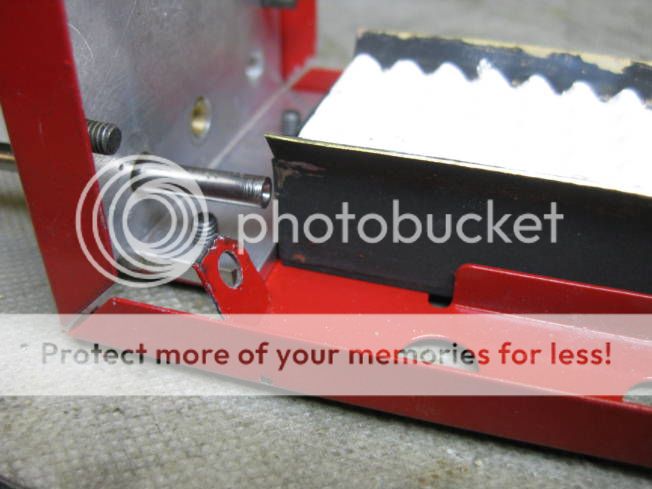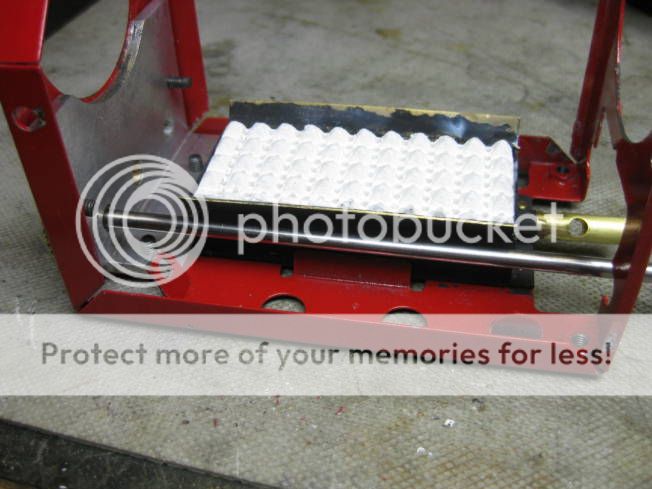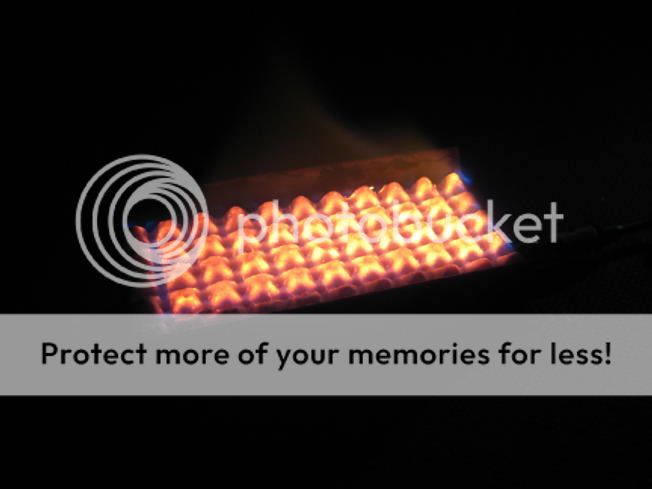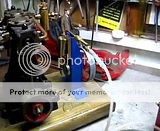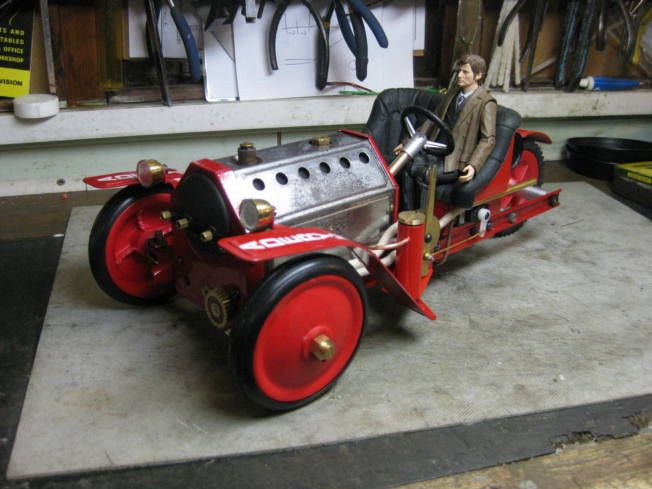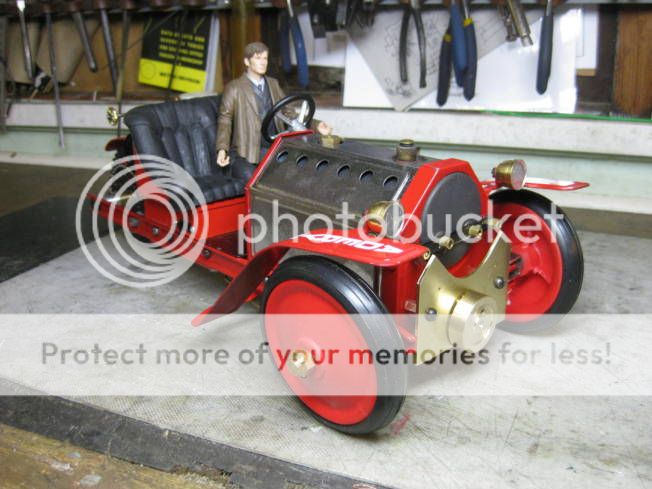Tony Bird
Senior Member
Hi,
1. The steam pipes have had spacers fitted and been lagged, an extension piece has been fitted to the exhaust pipe.

2. The type of reversing valve made and fitted works well as a throttle and can be radio controlled, which is helpful if a separate regulator isn't fitted and it also saves a servo. The poor drawings that follow I hope show how it works. Most servos have a 60 degree movement so the valve is designed to give a proportional throttle in forward and reverse within these limits. The idea is for the exhaust to be open before the steam inlet to reduce back pressure in the cylinder. The first drawing shows the valve in neutral.
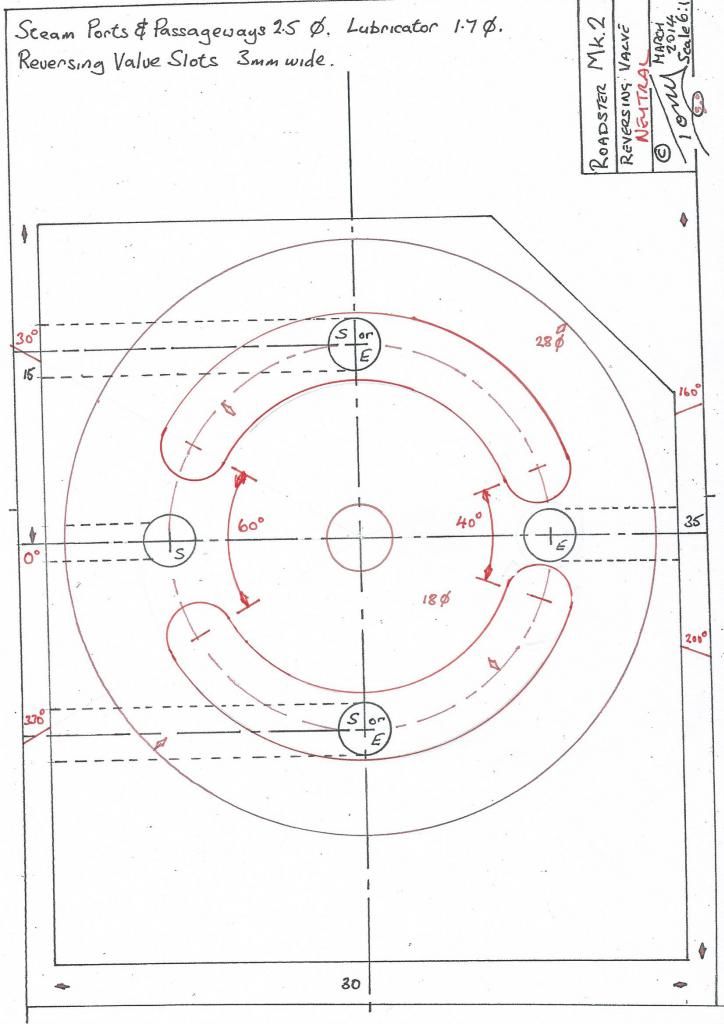
3. The steam inlet is about to open and the exhaust is better than 50 percent open.
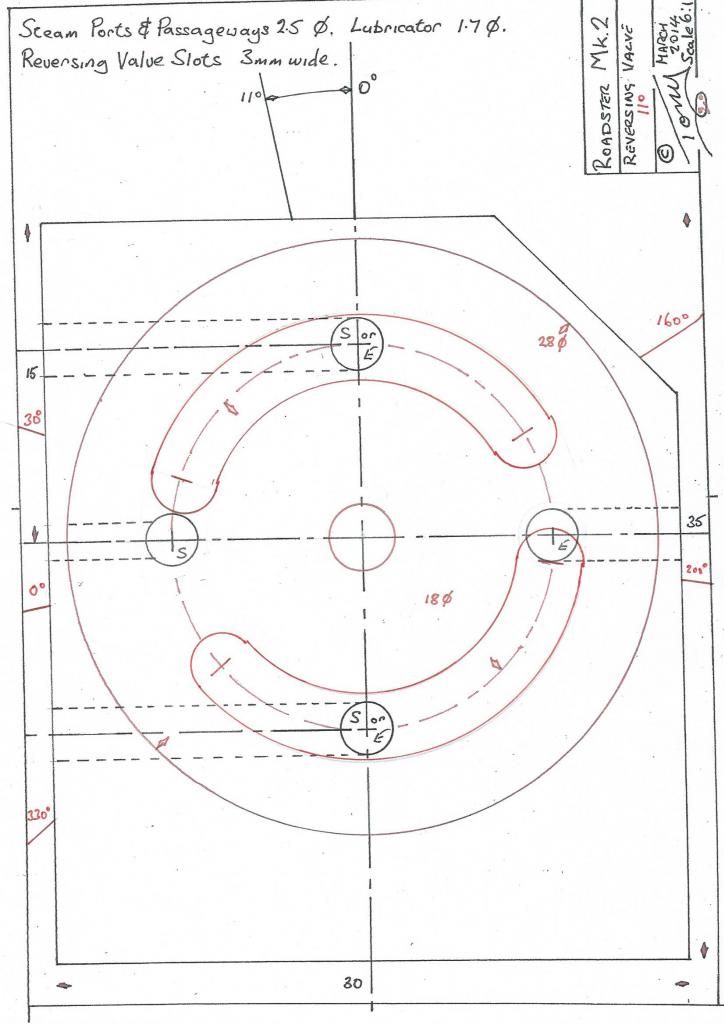
4. The exhaust valve is fully open and the inlet about 25 percent open.
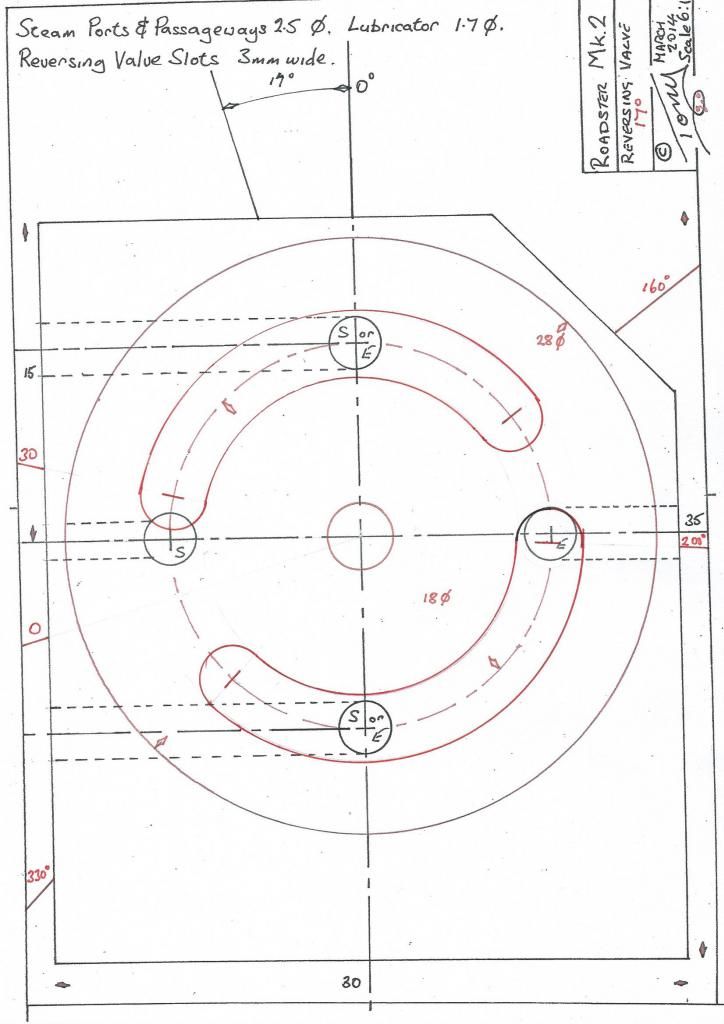
5. Inlet fully open. By increasing the angular moment of the valve and shortening the length of the slots it is possible to arrange for the exhaust to be completely open before the inlet starts to open. I have used this type of reversing valve many times and it does seem to work a lot better than the valves where both the steam and exhaust open at the same rate.
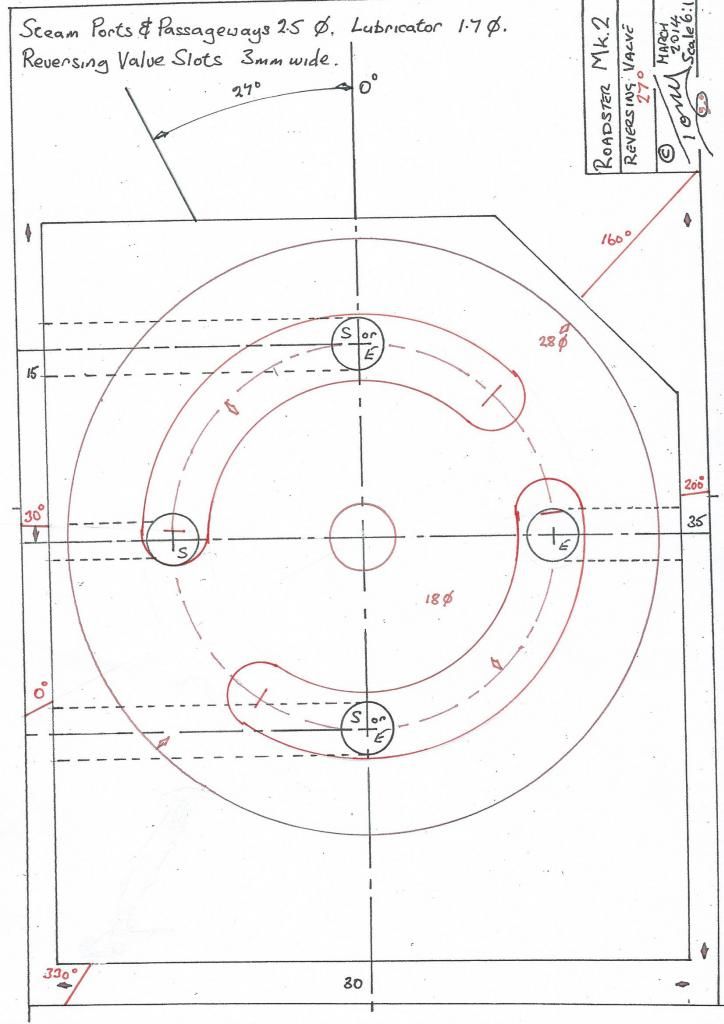
6. Machining the valve.
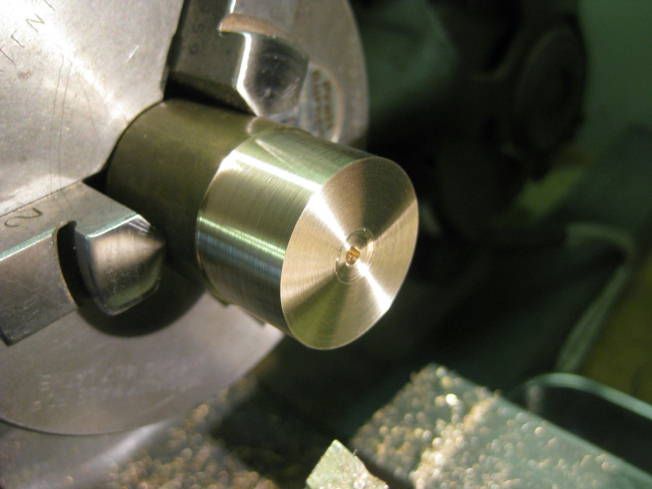
7. Milling the slots
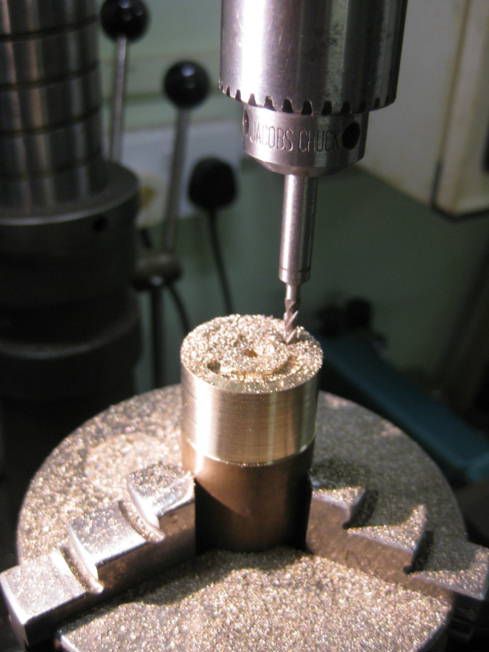
8. Parting off the valve.
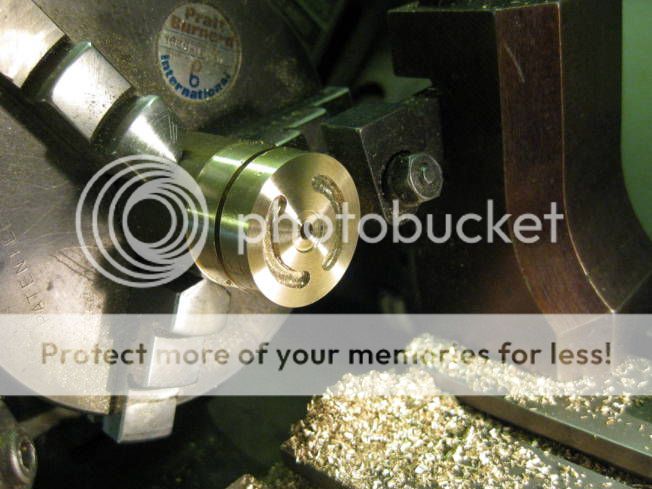
9. Machining the other side of the valve on a wax chuck fitted with a locating spigot.
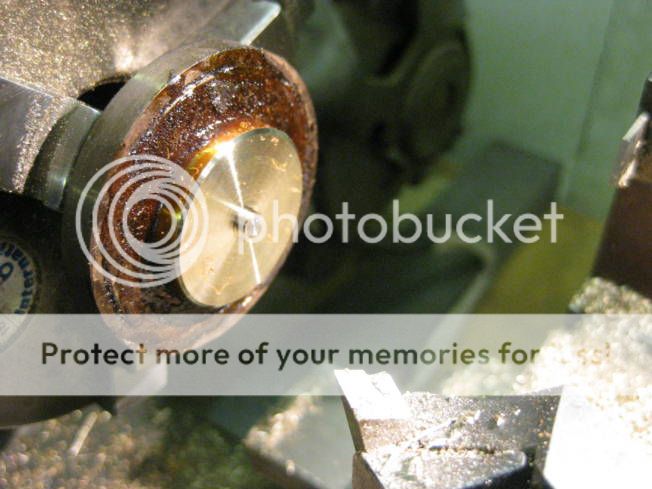
10. Handle roughed out and test fitted.
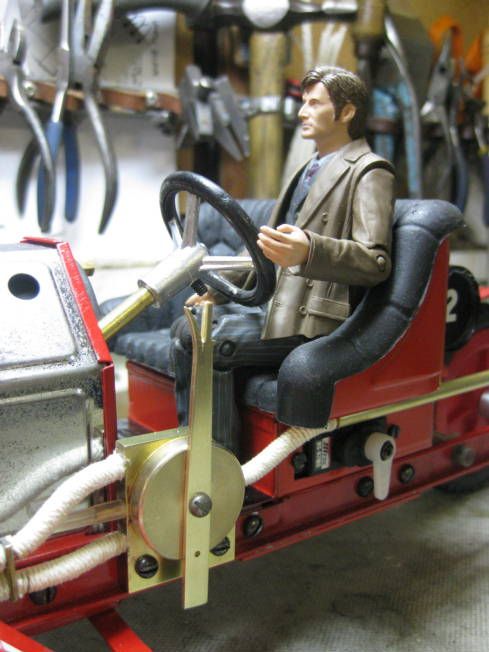
11. The model to date.
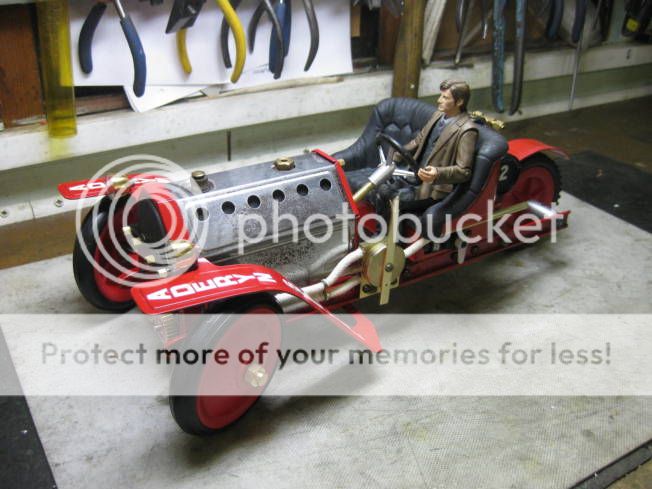
Regards Tony.
1. The steam pipes have had spacers fitted and been lagged, an extension piece has been fitted to the exhaust pipe.

2. The type of reversing valve made and fitted works well as a throttle and can be radio controlled, which is helpful if a separate regulator isn't fitted and it also saves a servo. The poor drawings that follow I hope show how it works. Most servos have a 60 degree movement so the valve is designed to give a proportional throttle in forward and reverse within these limits. The idea is for the exhaust to be open before the steam inlet to reduce back pressure in the cylinder. The first drawing shows the valve in neutral.

3. The steam inlet is about to open and the exhaust is better than 50 percent open.

4. The exhaust valve is fully open and the inlet about 25 percent open.

5. Inlet fully open. By increasing the angular moment of the valve and shortening the length of the slots it is possible to arrange for the exhaust to be completely open before the inlet starts to open. I have used this type of reversing valve many times and it does seem to work a lot better than the valves where both the steam and exhaust open at the same rate.

6. Machining the valve.

7. Milling the slots

8. Parting off the valve.

9. Machining the other side of the valve on a wax chuck fitted with a locating spigot.

10. Handle roughed out and test fitted.

11. The model to date.

Regards Tony.





